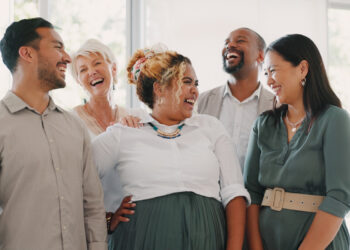Confronting bad behavior in your club is absolutely necessary, and here are some examples of detrimental behaviors and how to address them.
The definition of behavior is the way in which one acts or conducts oneself, especially toward others.
Recently, I found myself dealing with a lot of behavior issues with a few people that I interact with, both at work and in my personal life. Knowing the negative effects that bad behaviors have on relationships and business, I knew that I had to address the issues quickly.
Oftentimes people try to rationalize bad behavior, rather than dealing with it. They pretend that it isn’t happening, convince themselves that it’s not important, or think that it will somehow go away. Simply, not true! When we allow bad behavior to continue, we are basically saying that it’s OK, and most of the time that bad behavior will become more severe and habitual; decreasing productivity, hurting morale and costing the company business.
Confronting unacceptable behavior is absolutely necessary, and here are some examples of detrimental behaviors:
Lack of Respect
Disrespect can manifest itself in all sorts of ways and it can cost our companies in more ways than one. State and Federal laws do not prohibit rude and disrespectful behavior at work, but they do offer protections against discrimination and harassment. As club owners and operators, it’s imperative that you prohibit managers and employees from engaging in rude, disrespectful or inflammatory behavior at work.
Aggressive Behavior
Aggressive behavior in the workplace puts employees at risk, hinders productivity and hurts the company’s reputation. Even when aggression isn’t blatant, it eventually erodes trust and morale and could lead to increasingly worse behaviors.
Talking Over People
Interrupting and talking over people shows a lack of self awareness, is offensive, and disregards that person and what they have to say.
As leaders, it is our responsibility to ensure the culture and environment that we work so hard to create isn’t damaged by poor behavior. We must set clear behavior expectations, communicating these through our service standards and job descriptions. If and when employees fail to follow codes of conduct, we have to use consistent disciplinary action, up to and including termination.
The unfortunate reality is that many times individuals don’t realize how others perceive them, and if they don’t see it, the likelihood that they will be able to change is slim.
The good news is that research shows that behaviors can be changed, if an individual has emotional intelligence.
The communication between your emotional and rational “brains” is the physical sources of emotional intelligence. The pathway for emotional intelligence starts in the brain, at the spinal cord. Your primary senses enter here and must travel to the front of your brain before you can think rationally about your experience. However, first they travel through the limbic system, the place where emotions are generated. So, we have an emotional reaction to events before our rational mind is able to engage. Emotional intelligence requires effective communication between the rational and emotional centers of the brain.
As we train our brain by repeatedly practicing new emotionally intelligent behaviors, our brain builds the pathways needed to make them into habits. Before long, you begin responding to your surroundings with emotional intelligence without even having to think about it. And just as your brain reinforces the use of new behaviors, the connections supporting old, destructive behaviors will become obsolete as you learn to limit your use of them.
There is no doubt that behaviors directly impact our business, culture and success. Supporting positive behaviors will bring a set of common qualities that foster excellence, productivity and friendships.
Stay ahead in the fitness industry with exclusive updates!
Tracy Stepp is the Director of Human Possibilities at The Claremont Club. For more information email her at tstepp@claremontclub.com.










